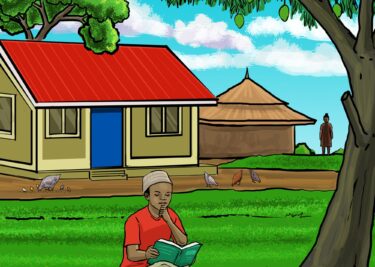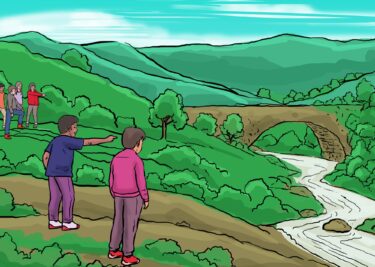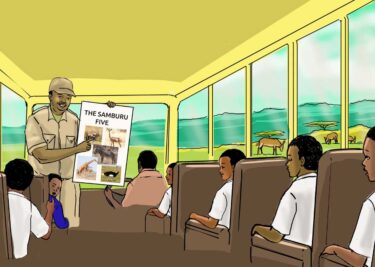Jamhuri High School

Prior to the construction of the East African Railway, Alibhai Mulla Jevanjee – an Indian emigrant in East Africa – was awarded the building contract of the grand railway project. He was only 39 years old, but already the young man was determined to put his skill to practice.
Jeevanjee recruited his team from his home country. The first group of men came to Mombasa by dhow and in the years that followed, more skilled Indian labourers would follow suit. The men arrived with a plethora of skills, all suitable for one job or the other, and they were all determined to make a living for themselves.
The railway line was completed in 1905. The work had been so intense, and some of the coolies had grown accustomed to their new home. Roughly 7,000 labourers, together with their families, stayed on in East Africa and set up homes in the region. Even though the majority of them set sail for home, their numbers were still considered significantly large in comparison to the 3,000 European settlers in the country. In order to accommodate these new Indian families and their children’s need for an education, a learning institution was set up expeditiously.
In 1904, a tin roof shanty on Whitehouse Road near the Nairobi Railway Station was selected as the building that would house a nursery school. Owing to its proximity to the station, the school was named Railway Educational Centre in 1906. Railway Educational Centre was a learning institution that started for Indian children by Indian immigrants. Over time, the school transitioned from a nursery to a primary and finally into a secondary school.
The mode of learning employed in Indian schools, including Railway Educational Centre, was uniquely suited to its demographic. At Railway Educational Centre, for instance, Urdu was the medium of early instruction. The pupils would be introduced to English at an early age but it would be used sparingly. Over time, the frequency in use of English would increase until it would eventually take precedence. By the time the Indian children were matriculated, Urdu would have long receded to being just one of the seven curriculum subjects. Indian children who were primarily Gujarati speakers were not many, and so they would be taught in a different stream, using Gujarati rather than Urdu. The language would, however, be phased out in the same manner as Urdu.
Development of Whitehouse Road and an increase in the student population resulted in the school’s relocation to its current site in Ngara, Nairobi County, in 1928. Following its move, its name was changed from Railway Educational Center to Government Indian High School. The school also transitioned from being a co-educational center to admitting boys only.
Adding to this, Government Indian High School’s name was changed to Duke of Gloucester School several years later. This makes us wonder whether the new boys-only policy was the driving force behind the establishment of Duchess of Gloucester School (now Pangani Girls’ High School), an exclusively Indian girls’ school, in 1932.
With a new nation came a new name to the school. The Duke of Gloucester had a turnaround and became the school we know today as Jamhuri High School, aka, Jamuu.
From Indian school to an all-inclusive national school, Jamuu is one of the biggest secondary day schools in the country. We wonder how much expansion is on the horizon. But as stories are also told by our readers, we call upon the Jamuu boys to tell us about their school and the lessons they learnt from here.





2 Comments
Nice article about our school…. one of our teachers is incapacitated and bedridden for let 4 years. Jamu alumni came to know about it in October and we are planning a major fundraiser to help her seek treatment. The response has been overwhelming. You can reach me for details
Hello Daktari. We pray for his/her quick recovery and wish you the best with the fundraiser